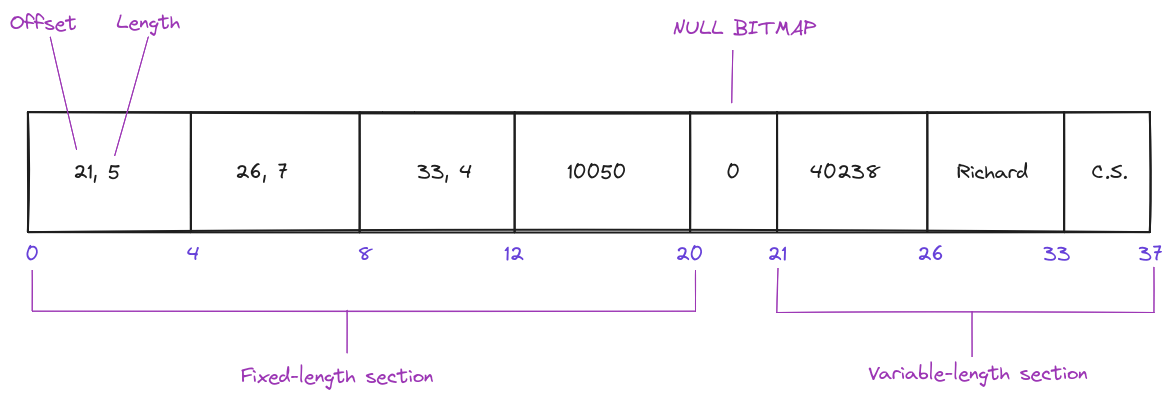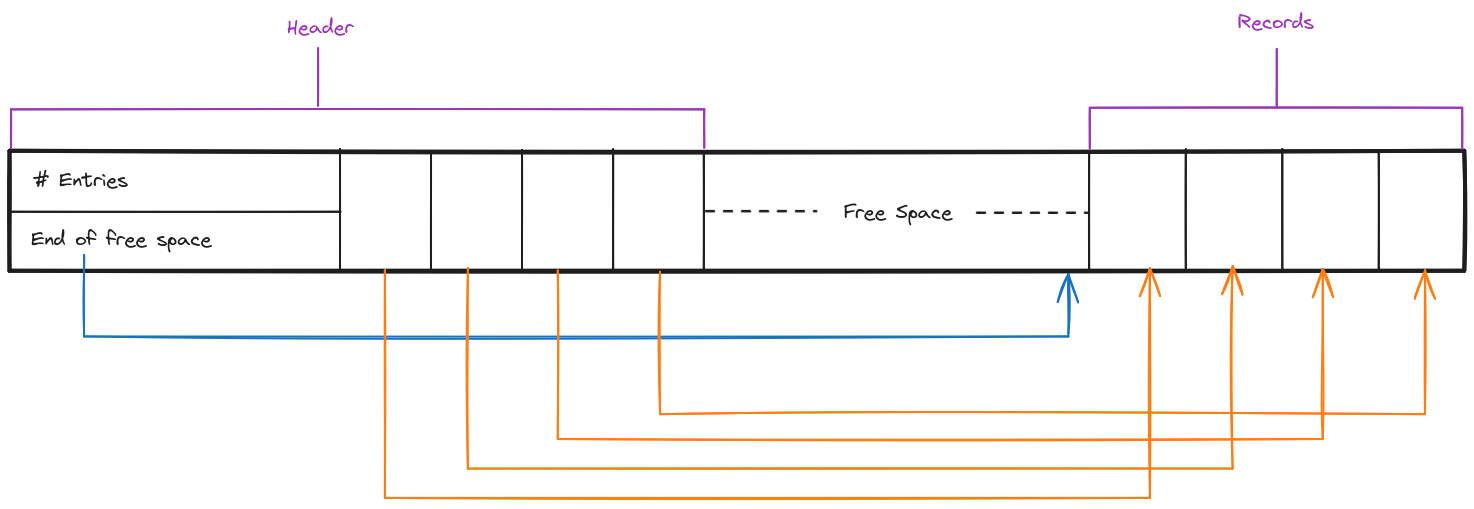Chapter 5: Data Storage Structures
Data structures on storage media.
File Organization #
A database is mapped into a number of different files managed by the underlying operating system. These files are organized logically as a sequence of records and are mapped onto disk blocks.
Each file is also logically partitioned into fixed-length storage units called blocks, which are file system units for both storage allocation and data transfer.
Records are also stored as either fixed-length or variable-length in size in any given file depending on the database implementation.
In most cases records are stored in variable-length sizes. The ff. are two ways to structure variable-length records in a block:
Variable-Length Records #
The ff. are ways (out of many available) to structure variable-length records:
Fixed-Length Prefix, Variable-Length Suffix #
In this structure a block is divided into three sections: the beginning contains values
for fixed-length data, the end contains values for variable-length data, and in-between
is a section for the null bitmap which simply represents attributes that have null
values in them.
Variable-length values are mapped from a record in the fixed-length section that contains information about its offset and length:

In this example the attribute is represented in the fixed-length section as being at the offset position of and having a length of .
Slotted-Page Structure #
The most common layout for variable-length records.
This structure contains three sections: the header section, the free section, and the record list section.
The block header commonly contains the ff. information:
- Total record entries
- The end of free space in the block
- An array containing the offset and length of each record
